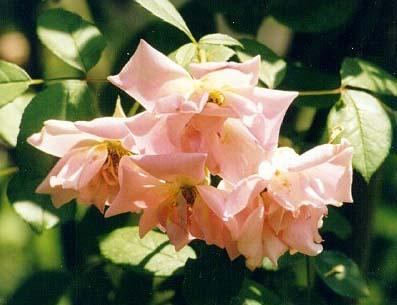| Classification | Climbing Polyantha |
|---|---|
| Year Introduced | 1952 |
| Size Category/Growth Habit | Mannerly climber |
| Height | 10 feet |
| Width | 7 feet |
| Spacing | 9 feet apart on centers |
| Color | Medium pink |
| Bloom | Semi-double blossoms. Blooms principally in the spring. |
| Fragrant | Lightly fragrant |
| Stem | Few thorns |
| Planting Site | Full sun. Good air circulation. |
| Water Use | Keep moist until established (usually requires one month to establish). Average water needs during growing season. Appears to tolerate highly saline irrigation water when drip irrigated. |
| Cold Hardiness | Hardy in zones 6-9 |
| History | China Doll x Sport of Pinkie. Discovered by E. P. Dering in the United States. Climbing Pinkie was introduced by Armstrong Nursery in 1952. |
Having very few thorns makes Climbing Pinkie the perfect rose to train on columns, trellises and arbors. It is beautiful, cascading down a rock retaining wall or along the top of a rail fence. It can even be grown trailing down a steep incline, as a large mounding shrub or plant several for an informal hedge. Climbing Pinkie will tolerate saline irrigation water as long as there is plenty of organic matter in the soil and the irrigation is done in a way that protects the foliage from contact with water. Old canes should be removed after flowering has finished in late spring each year. This allows new canes to develop.

Landscape Uses
Climbing Pinkie is a mannerly climber if supported or makes a beautiful cascading shrub. This cascading form makes an excellent informal landscape border. Climbing Pinkie can be used to form tall hedges or screens to block unsightly views. When planted alone this plant is a spectacular specimen. New canes develop from the base of the plant and older canes should be removed annually to maintain optimum growth and flowering.


